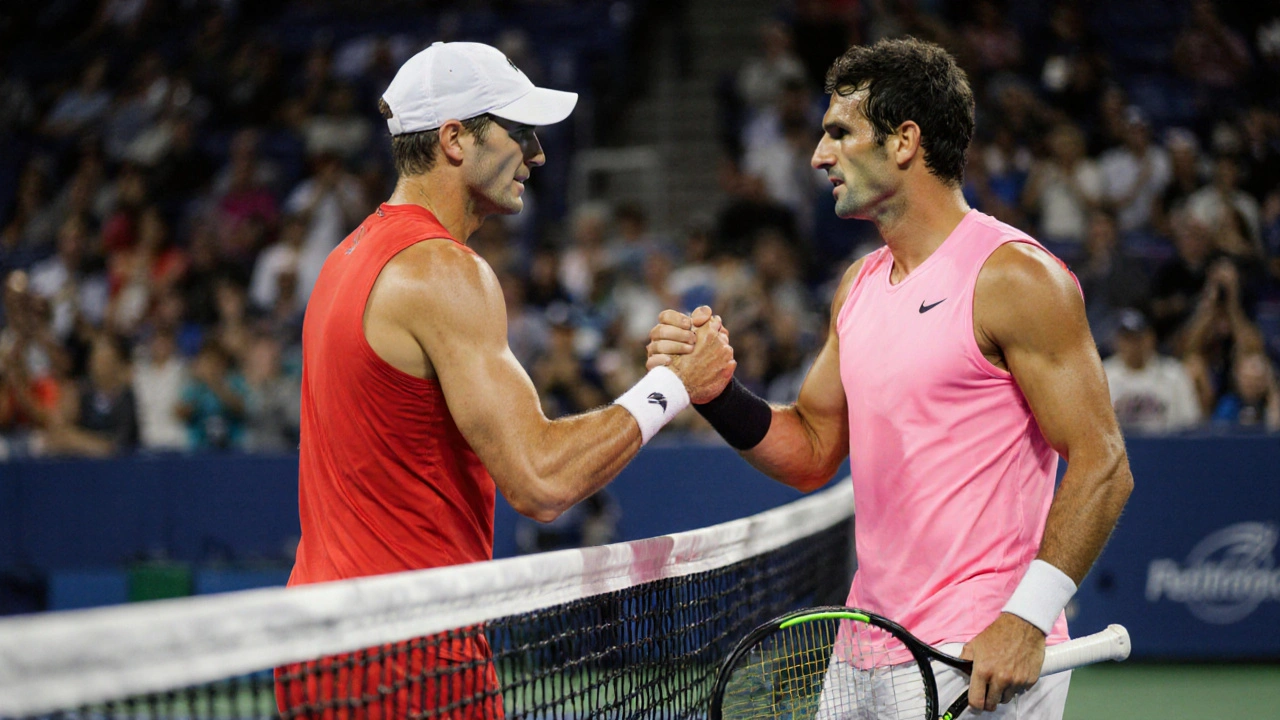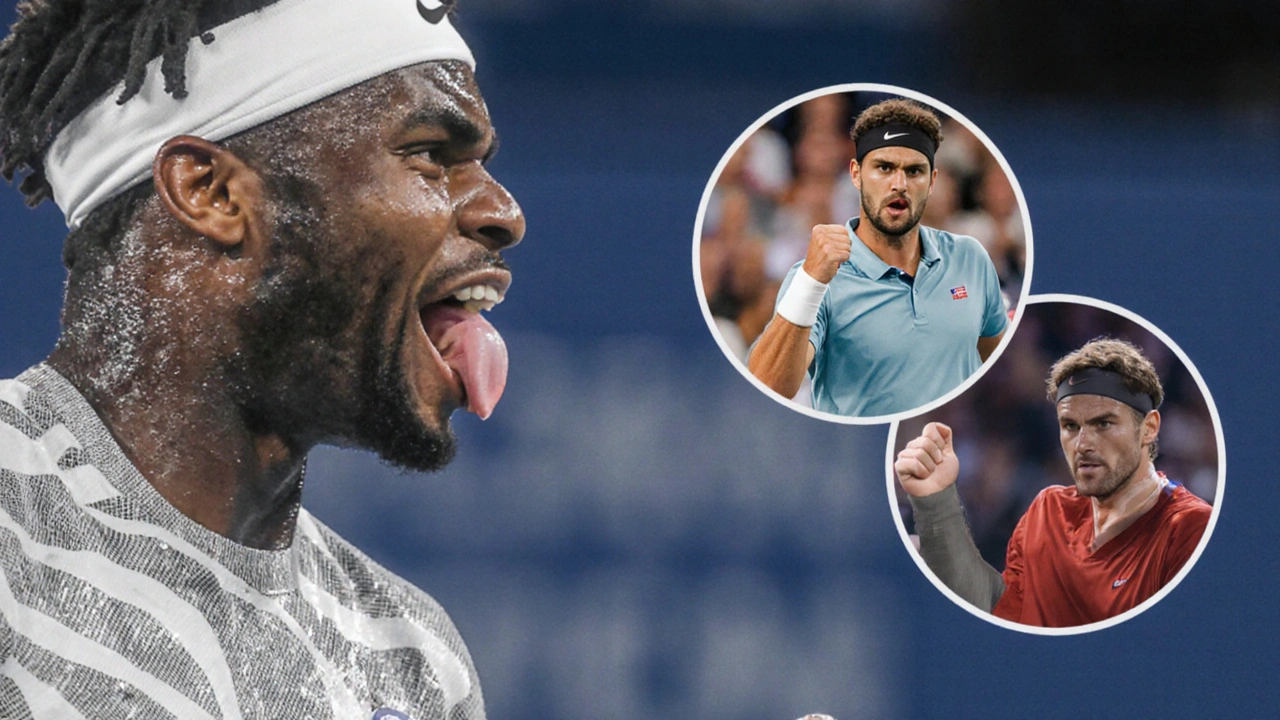American pro Frances Tiafoe didn’t shy away from the truth this week—he’s been playing with his heart in his throat. The two‑time US Open semifinalist said his recent results look nothing like the potential he knows he has, and the main culprit is plain old nervousness. "I was overthinking every point," he told reporters, adding that the mental hang‑up kept him from hitting his best swings.
What went wrong for Tiafoe this season
When asked to break down the slump, Tiafoe pointed to three key factors:
- Mindset: He entered matches already expecting to lose, which turned good opportunities into pressure‑filled moments.
- Physical rhythm: A string of tight‑schedule tournaments left him without enough time to settle into a groove.
- Confidence gap: A few early‑round losses shook his self‑belief, creating a feedback loop of doubt.
He emphasized that the issue isn’t lack of talent—he’s still capable of blasting winners from all corners of the court—but rather a mental fog that needs clearing. Tiafoe hinted at working with a sports psychologist over the off‑season, hoping to rebuild the calm that carried him to deep runs in past Slams.

Why the Alcaraz‑Sinner rivalry matters now
While Tiafoe was dissecting his own game, he turned his attention to the headline rivalry that’s gripping the tennis world: world No. 1 Carlos Alcaraz versus Italy’s Jannik Sinner. Both are in their early twenties, both have already collected Grand Slam titles, and both are reshaping what men’s tennis looks like.
According to Tiafoe, the contrast between the two is as fascinating as their similarities. Alcaraz brings explosive athleticism, a fearless approach to net work, and a swagger that reminds many of a young Federer. Sinner, on the other hand, relies on a razor‑sharp baseline game, laser‑accurate forehands, and a cool composure that belies his age.
The American drew an unexpected parallel between himself and Alcaraz, noting that “both of us just love going for the finish line with every point.” He said the Spanish star’s willingness to take risks mirrors his own instinctive play, even if Tiafoe feels he currently lacks the consistency to match it.
Recent US Open action gave the rivalry a fresh chapter: Alcaraz powered past Sinner in a straight‑sets semi‑final, flashing a level of dominance that sparked talk of a new era. After the match, Alcaraz hinted that Sinner will have to tweak his game—just as the Spaniard refined his own tactics after past defeats.
Fans and analysts agree that this back‑and‑forth keeps the sport alive. Every time Alcaraz and Sinner meet, they push each other to expand their arsenals, whether it’s adding a serve‑and‑volley weapon or sharpening a second‑serve percentage.
For Tiafoe, watching this duel is both inspiring and sobering. He sees a roadmap: hard work, mental toughness, and the willingness to evolve. "If I can learn something from their rivalry," he said, "it’s that you have to stay hungry even when you’re on top."

5 Responses
Life’s a game of points, and sometimes the ball’s in our mind more than on the court.
Honestly, Tiafoe sounds like a walking case study for why elite athletes need a reality‑check; overthinking every point is a recipe for mediocrity. You could say his mental fog is just an excuse to hide a lack of discipline, and that's a narrative you see far too often in the tour. If he keeps treating his brain like a squeaky wheel, the only thing that'll spin faster is the gossip surrounding his “potential”.
Yo, I get the vibe that Tiafoe could really level up with a solid mental coach 🧠✨. Studies show that even a few sessions with a sports psychologist can shrink that “fog” and boost confidence on court. It’s not just about fancy talk; it’s about building a routine that sneaks calm into every serve and rally. Plus, having someone to de‑brief after a match can turn those early‑round losses into data, not drama. 🎾💪
It’s kinda obvious that the racket‑world media loves to paint players like Tiafoe as fragile, and that’s a deliberate ploy to keep us glued to drama. They whisper “nervousness” while the real puppeteers-sponsors and tournament committees-pull the strings behind the scenes. If you look past the PR fluff, you’ll see a pattern: any player who isn’t a marketable brand gets the “mental block” label. Stay woke, folks.
The tension between Alcaraz and Sinner reads like a modern epic, each chapter redefining the limits of youthful ambition. While Tiafoe watches from the sidelines, his own narrative offers a cautionary subplot about the perils of an unchecked inner critic. In the grand theater of sport, the mind often serves as both stage and director, orchestrating applause or silence with equal authority. Neuroscientific research suggests that overthinking can flood the prefrontal cortex with noise, drowning the precise motor commands needed for a clean swing. This is why athletes who cultivate a meditative practice frequently report a steadier baseline of performance, as the brain learns to filter out extraneous chatter. Tiafoe’s admission of “heart in his throat” therefore is not merely a poetic flourish but a diagnostic symptom of a deeper cognitive overload. The Alcaraz‑Sinner rivalry, by contrast, illustrates how two competitors can harness pressure as fuel, converting anxiety into kinetic energy that propels them beyond ordinary limits. Their matches become laboratories where each player experiments with risk, adjusting serve patterns, volley timings, and even psychological pacing in real time. Observing this dance, one can infer that the ultimate advantage lies not in raw talent alone but in the capacity to reframe stress as a catalyst rather than a barrier. Consequently, the lesson for Tiafoe-and for any aspiring champion-is to reconstruct his internal narrative from one of dread to one of curiosity. By redefining each point as a question rather than a verdict, the athlete can restore a sense of exploration that mitigates the dread of failure. Moreover, integrating structured mental training alongside physical conditioning creates a feedback loop where confidence begets performance, and performance, in turn, reinforces confidence. This symbiotic cycle mirrors the very dynamic that fuels the Alcaraz‑Sinner exchanges, where each volley is both a challenge and a promise of growth. In practical terms, Tiafoe might schedule brief mindfulness drills before matches, employ visualization techniques that map out desired shot trajectories, and debrief with a psychologist who can translate anxiety into actionable strategy. If he can internalize these practices, the “nervous season” could become a stepping stone rather than a stumbling block, allowing his genuine talent to finally surface without the veil of mental fog.